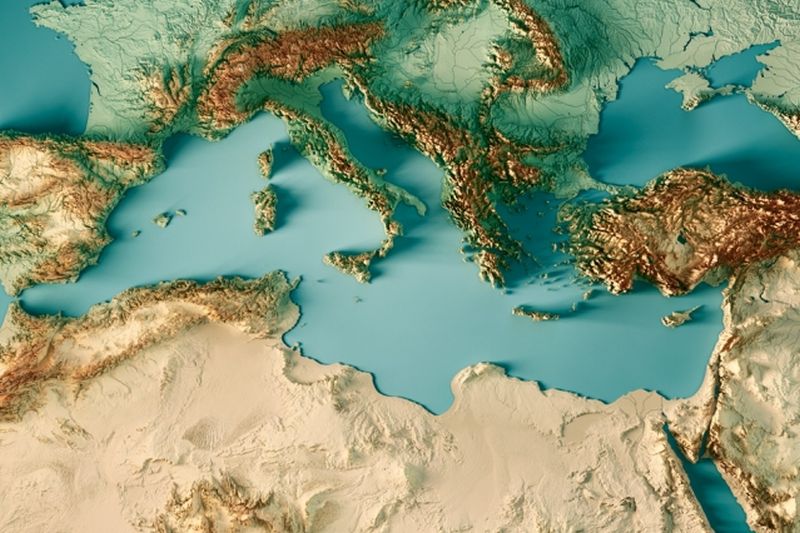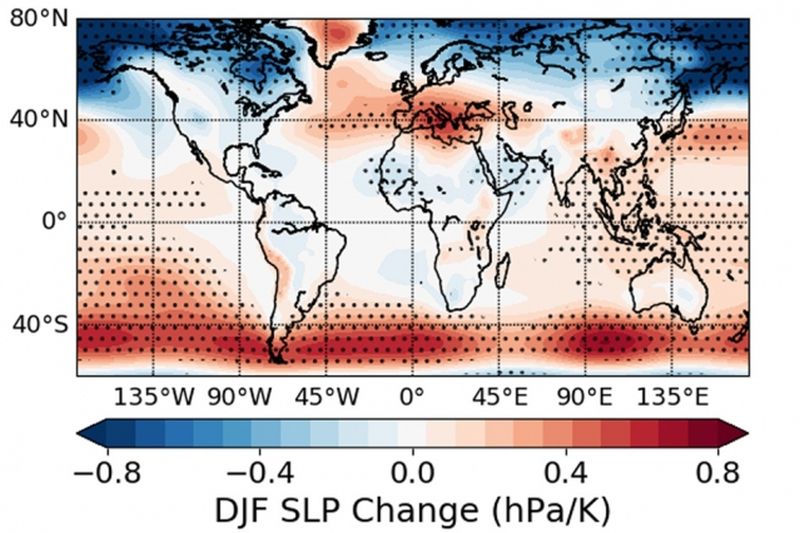MIT Study Reveals Why Mediterranean is Hotspot of Global Climate Change
Global climatic patterns have been changing for a long time now. Various places across the globe have been bearing the brunt of this change through heavy rains, flash-floods, and scorching heat. A recent study by researchers from the Massachusetts Institute of Technology (MIT), has revealed that the Mediterranean region will be the hotspot of global climate change.
According to the research, the Mediterranean area will be particularly drier in coming decades, owing to the climate change. Moreover, the region will also be 40 percent less precipitation during the winter rainy season.

Areas adjoining Mediterranean will warm up faster than the sea, leading to major water scarcity crisis | Image: MIT
Researchers at MIT have been working to comprehend the connection between a warming climate and reduced rainfall in northwest Africa and in the Middle East. Drier climates in those regions have already been witnessed.
The study was published in the Journal of Climate, and was carried out by MIT graduate student Alexandre Tuel and professor of civil and environmental engineering Elfatih Eltahir.
The climate change patterns exhibit the signs that temperatures virtually everywhere will increase, and in most places so will rainfall, in part because warmer air can carry more water vapor. However, Mediterranean region is an exception, showing the greatest decline of projected rainfall of any landmass on earth.

Different global circulation models of the Earth’s changing climate agree that temperatures virtually everywhere will increase | Image: MIT
Tuel and Eltahir found that this projected dying of the Mediterranean region is a result of the confluence of two different effects of a warming climate. A change in the dynamics of upper atmosphere circulation and a reduction in the temperature differences between land and sea.
Also Read: Daunting Tale of Worsening Water Scarcity in the Indian Subcontinent
The jet stream that controls weather patterns across North america, Europe, and Asia gets disturbed by mountain ranges such as the Rockies, the Alps, and the Himalayas.
The MIT study suggests that as the hotter temperatures make the jet stream more powerful, the newly created high pressure zone with low humidity will be directly over the Mediterranean area. The resulting scorching heat will be devastating for farmers in Morocco and the Levant.
The researchers believe that the land adjoining the Mediterranean will get warmed up faster than the sea. The following temperature difference will lead to a clockwise wind pattern around the region. Local topography will act together with that wind flow to intensify the effect of the high pressure area to lessen rainfall in northwest Africa, including Morocco, and the eastern Mediterranean region, including Turkey and the Levant.
Eltahir said,
We document from the observed record of precipitation that this eastern part has already experienced a significant decline of precipitation…The fact that the underlying physical processes are now understood will help to ensure that these projections will be taken seriously by planners in the region and will enabling them to understand the exact mechanisms by which that change is going to happen.
The overall analysis of the study suggests that certain parts of the land around the Mediterranean will be facing critical scarcity of water in the coming years, such shortages will lead to lower crop yields and drinking water insufficiency.
Via: MIT News


